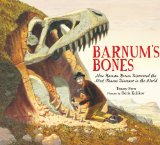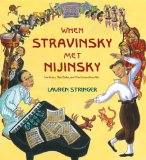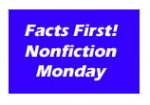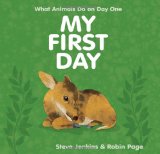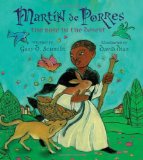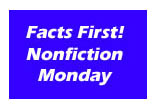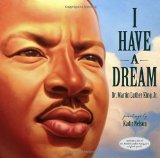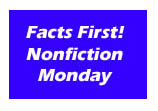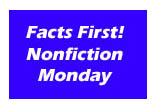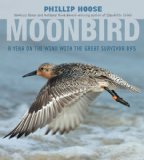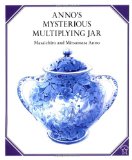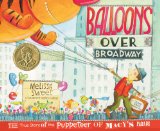Review of Barnum’s Bones, by Tracey Fern and Boris Kulikov
How Barnum Brown Discovered the Most Famous Dinosaur in the World
by Tracey Fern
Pictures by Boris Kulikov
Margaret Ferguson Books (Farrar Straus Giroux), New York, 2012. 36 pages.
Here’s a picture book biography that can’t fail to catch the reader’s interest.
The most difficult thing about this book will be getting the kids to find it. In our system, it’s cataloged as a Biography, where it is shelved by the name of the person it’s about, under “Brown.” But who would ever think of doing a report on Barnum Brown? This isn’t a biography for reports, but a book to fascinate young readers about a man with the awesomely cool job of discovering dinosaur bones. My plan is to put it on display as often as possible, since the big T-Rex skull on the cover won’t fail to find the book its proper audience.
Yes, Barnum Brown is the man who found the first Tyrannosaurus Rex skeleton. In fact, according to the Author’s Note at the back, when he began working for the American Museum of Natural History in 1897, “it did not have a single dinosaur specimen. When he died in 1963, the museum had the largest collection of dinosaur bones in the world. Barnum had unearthed most of these himself.”
The book tells about Barnum Brown’s life. Even as a child, he had a knack for finding fossils. It goes on to show his general career of fossil-hunting with exuberant pictures, with special attention and detail devoted to the T. rex skeleton, which he tracked down over a period of years. Barnum’s mentor named it and Barnum called it his favorite child.
This is the sort of book that will inspire young dinosaur lovers. It’s about a scientist who followed his passion and discovered a giant.
Just as his family had wanted, Barnum did something important and unusual: he discovered a sleeping dinosaur and brought it back to life. Sixty-six million years after extinction, T. rex lives on in Barnum’s bones.
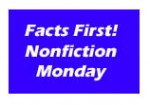 I’m posting this review today in honor of Nonfiction Monday, hosted today at Wendie’s Wanderings
I’m posting this review today in honor of Nonfiction Monday, hosted today at Wendie’s Wanderings
traceyfern.com
boriskulikov.com
mackids.com
Find this review on Sonderbooks at: www.sonderbooks.com/Childrens_Nonfiction/barnums_bones.html
Disclosure: I am an Amazon Affiliate, and will earn a small percentage if you order a book on Amazon after clicking through from my site.
Source: This review is based on a library book from the Fairfax County Public Library.
Disclaimer: I am a professional librarian, but I maintain my website and blogs on my own time. The views expressed are solely my own, and in no way represent the official views of my employer or of any committee or group of which I am part.
